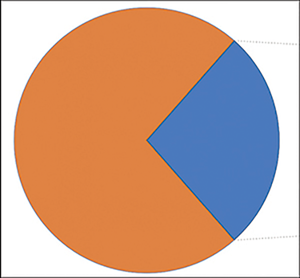Crossref Citations
This article has been cited by the following publications. This list is generated based on data provided by
Crossref.
Smith, Michael E.
2021.
Why archaeology's relevance to global challenges has not been recognised.
Antiquity,
Vol. 95,
Issue. 382,
p.
1061.
Opitz, Rachel
Strawhacker, Colleen
Buckland, Philip
Cothren, Jackson
Dawson, Tom
Dugmore, Andrew
Hambrecht, George
Koster, Willem
Lethbridge, Emily
Mainland, Ingrid
McGovern, Tom
Newton, Anthony
Palsson, Gisli
Ryan, Tom
Streeter, Richard
Stade, Elisabeth
Szabo, Vicki
and
Thompson, Polly
2021.
A Lockpick's Guide to dataARC: Designing Infrastructures and Building Communities to Enable Transdisciplinary Research.
Internet Archaeology,
Ruiz Zapatero, Gonzalo
2022.
Margarita Díaz-Andreu y Marta Portillo (coords.). Arqueología e interdisciplinariedad. La microhistoria de una revolución en la arqueología española (1970-2020). Edicions Universitat de Barcelona. Barcelona, 2021, 410 pp. y numerosas ils. .
Trabajos de Prehistoria,
Vol. 79,
Issue. 2,
p.
392.
Rick, Torben C.
2023.
Coastal Archaeology and Historical Ecology for a Changing Planet.
Journal of Anthropological Research,
Vol. 79,
Issue. 2,
p.
153.
Monks, Carly
Stannard, Georgia L.
Ouzman, Sven
Manne, Tiina
Garside, Joel
and
Ulm, Sean
2023.
Why do students enrol in archaeology at Australian universities? Understanding pre-enrolment experiences, motivations, and career expectations.
Australian Archaeology,
Vol. 89,
Issue. 1,
p.
32.
Ribeiro, Artur
2023.
Postmodernity: Archaeology in Late Capitalist Times.
Norwegian Archaeological Review,
Vol. 56,
Issue. 2,
p.
123.
Budka, Julia
Ward, Chloë
and
Elkins, Carl G.
2023.
A Day on the Nile: Living in a Town in Nubia.
African Archaeological Review,
Vol. 40,
Issue. 3,
p.
555.
Roberts, Charlotte A.
2023.
Handbook of Archaeological Sciences.
p.
339.
Taylor, Nicole
Rinne, Christoph
Brozio, Jan Piet
Kneisel, Jutta
Wieckowska-Lüth, Magdalena
Kleijne, Jos
Gorbahn, Hermann
Kirleis, Wiebke
and
Müller, Johannes
2024.
Perspectives on Socio-environmental Transformations in Ancient Europe.
p.
11.





